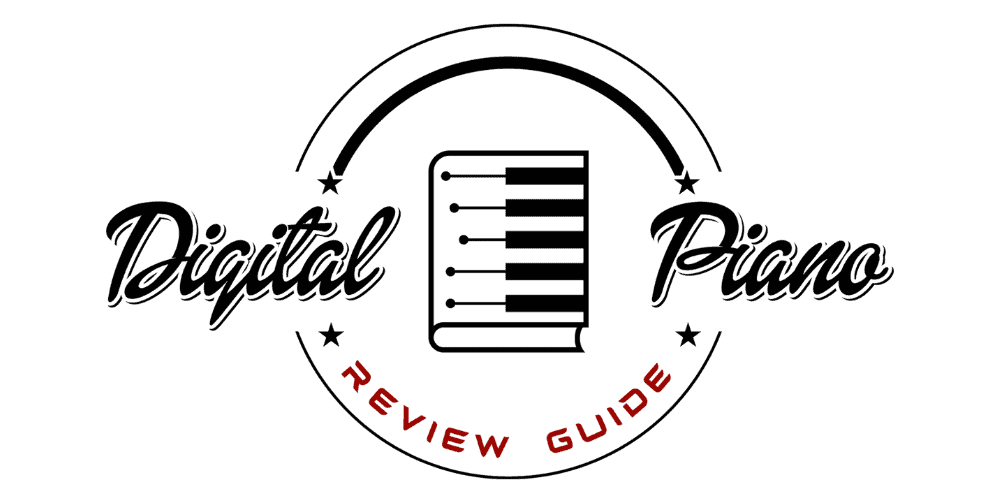Korg Kross review

Korg is a name that is associated with exceptional quality instruments, specifically keyboards and pianos. Korg is also at the forefront of the workstation genre of keyboards, and in this article, we’ll be comparing two entry-level workstation keyboards made by Korg: the Korg Kross and the Korg Krome.
We’ll examine and review each keyboard’s features and decide which of the two might be the best fit for you and why.
Now using the guide below, see how the Korg Kross compares to some of its notable competitors on the market:
| Photo | Model |
|---|---|
 | Roland JUNO DS61 |
 | Roland JUNO DS88 |
| Korg Kross 2 | |
 | Korg Minilogue |
 | Roland JD-XI |
 | Yamaha MX88 |
 | Behringer Monopoly |
 | Novation Impulse 61 |
Features and Appearance of the Korg Kross
The Korg Kross is a workstation keyboard–a keyboard that focuses on recording and creating music. This is for musicians whose primary purpose is to use a keyboard for music production. It comes as a 61 unweighted keyboard or an 88 weighted key instrument and has a studio-quality EDS-I sound engine, which is created from EDS/EDS-X engines that are only found on Korg’s higher-level instruments.
With the EDS-I sound engine, you have a total of 7 simultaneous effects: five inserts and two masters. In addition, the Korg Kross comes with 134 other effects like chorus, reverb, rotary speaker and delay.
With the Kross, there is no need for a synthesizer or a regular digital piano, as the workstation combines all those into one instrument. Its lightweight, plastic shell screams portability but also low cost, and at a price of around $870 for the 61-key and $1300 for the 88-key, the Korg Kross is a value compared to similar workstations.
It weighs about 9.5 pounds for the 61-key and 27 pounds for the 88-key, with a compartment for six AA batteries, making it a portable instrument musicians can easily travel with. It is also soundly constructed with a red and black exterior with 3 encoders, 2 knobs, 2 wheels (modulation and pitch), and several buttons.
There is a front headphone output with everything else on the back of the instrument: three rear connectors for pedals, MIDI In/Out, an SD Card connector, USB port, mic input, left and right stereo outputs, and a connector for the power supply.
The front of the instrument features a LCD screen, operation mode buttons, transport controls, and sixteen buttons for programming a step sequencer or for saving settings. Two dials navigate the selection of sounds, one for choosing one of 12 categories and one for making a choice from the chosen category.
There are two keys near the pitch/modulation wheels that allow for modulating sound in real time.

Below, please take a look at some of the best selling pianos that are currently available online:
| BEST SELLERS |
|---|
| 1) Casio PX-770 |
| 2) Yamaha YDP-145 |
| 3) Roland RP-701 |
| 4) Yamaha YDP-165 |
| 5) Casio PX-870 |
Here are some other basic features worth noting:
- 80-note polyphony
- 700 drum patterns
- 128 song memory
- 54 piano sounds
- 88-key or 61-key version
The polyphony count is pretty low, in my opinion, but it does have an abundance of drum patterns at 700, and a memory where up to 128 songs can be stored. There are several instrument sounds to choose from too, with 54 piano sounds alone. There are also, electric pianos, organs strings, choir, and bells.
In Program mode, there are one or two oscillators (whose pitch can be modulated) a percussion kit, and four velocity zones that are able to be modified while in Global mode. The Kross has modules typical to a workstation, including amp, effects, pitch, and filters. The arpeggiator is a 12-sound polyphonic module that lets the musician create rhythm patterns by using the 916 pre-programmed ones, or by creating their own, using the Step Sequencer.
Overall, the Korg Kross is a substantial entry-level workstation that any beginner would be satisfied with. Its ample instrument, and rhythm sounds, give the musician lots of options to explore while the different modes allow you to customize your settings to your liking.
Key Features and Traits of Korg Krome
The Korg Krome comes in 61-key (semi-weighted), 73-key, and 88-key versions and multiple colors. The layout of the Krome is simple and clear, with controls laid out in grid patterns that navigate menus, select sounds, and control the sequencer. The Krome also has a touchscreen in the middle of the keyboard.
Like the Kross, this workstation has MIDI input and output ports, a USB port, stereo audio outputs, and an SD card slot.
The Krome is full of excellent sounds like piano, strings, drums, and bass. The possibility is there to combine instruments into one sound, a cool feature of the Krome. Typing in a number using the keypad or typing into the touchscreen gets you into a program, which is the name of instruments on the Krome.

You’re able to get into a category and choose which sound you’d like; there are 640 programs and 384 combinations which combine several instruments into one sound. There are categories inside of categories for quick finding of instrument sounds. The Krome also has 193 digital effects, so there are tons of options available.
There are 128 program slots to save your settings. There is a useful 16-track sequencer for quick and convenient music-making. The Krome features four knobs and three rows of functions for the performance controls. You’re able to customize resonance, envelope settings, and cutoff with the top row while the middle row is open for your own customizations, and the last row features arpeggiator settings.
The Krome uses PCM samples exclusively and has an EDSx (Enhanced Defintion Synthesis, Extended) sound engine. This hardware engine is the foundation of the Krome and features up to two stereo oscillators, two amp sections, five Low Frequency Oscillators, four filters, and five Envelope Generators.
The stereo oscillators can each have velocity switching, layering, or crossfading, and allowing one sound to use up to eight stereo samples for an overall impressive sound. The Krome’s effects give you five inserts, two master effects, and a simultaneously “total” effect at once.
Instrument Sounds
A lot of the Krome’s sounds come from its predecessor, the Kronos. The Krome Grand Piano piano sound is created from various grand pianos and has full, uncompressed and un-looped samples for each note. It has a good sound, not as good as a standalone digital piano, but a fine one nonetheless, especially compared to workstations in a similar price range. The electric piano sounds also have Kronos influence and are shimmery and bright. It’s got both Rhodes and Wurlitzer organs, which are both fine recreations of the real thing.
Korg Kross vs Korg Krome
So how does the Korg Kross compare to the Korg Krome? Well, if we’re looking at overall sound quality, the Krome is superior, with a cleaner, more polished sound than the Kross.
There are also more choices to pick from for the Krome, as the Krome has 61, 73, or 88 key editions versus the Kross’ 61 and 88 versions. The two instruments differ in sound engines, with the Kross using an Enhanced Definition Synthesis-integrated (EDS-i) sound engine and the Krome using Enhanced Definition Synthesis eXpanded (EDS-X). The EDS-X sound engine produces a better sound than the EDS-i and uses a lot more samples than it as well.
The Krome also trumps the Kross’ polyphony count with the Kross having an 80/40 (depending whether you’re in single or double mode) polyphony count and the Krome having 120/60 polyphony count. The Krome’s PCM Memory far surpasses Kross’ with a 3.8 GB memory over Kross’ 112 MB.
The Krome features 583 multisamples and 2,080 drum samples while the Kross has 421 multisamples and 890 drum samples. The Krome has 193 effects against the Kross’ 134, as well.
When you factor all of these facts, it’s not hard to see why the Korg Krome is actually the more prerable instrument over the Kross.
Conclusion
The best thing about the Kross is its low price, with the 61-key edition coming in at $870 and the 88-key at $1,300. By contrast, the Krome costs $1,200 in the 61-key version; $1,440 for its 73-key version, and $1,920 for its 88-key version.
It’s clear that the Korg Kross is a bargain entry-level instrument, but I think if you’re committing to purchasing a workstation, you should go for the highest quality you can afford. So if you can spend a little extra and get the Krome, you should strongly consider doing so.
Please bookmark Digital Piano Review Guide so you can stay up to date on all piano industry news. Please also like us on Facebook!
You might also enjoy reading:






